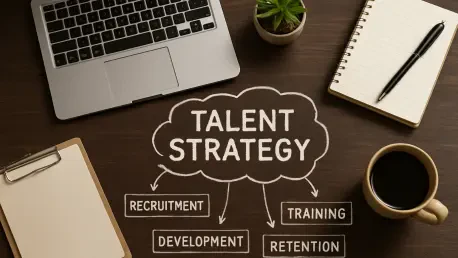Prioritizing employee education and training can improve profit margins by up to 24%. Yet, many businesses have gaps in operational knowledge that can lead to catastrophic equipment failures, damaged equipment, reduced productivity, or even endanger lives. Training is especially critical in industries where risks are elevated and the consequences of mistakes are far-reaching. This article explores how moving away from traditional classroom models toward strategic, risk-focused staff education is reshaping industries, especially the natural resources sector, where billions of dollars in assets and human lives are at stake.
Adapting to Today’s Risk Landscape
The natural resources industry operates under immense pressure. The combination of sophisticated machinery, dangerous working conditions, and strict regulatory frameworks leaves little room for error. Even small gaps in knowledge can snowball into significant operational and safety incidents. That’s why traditional training programs, designed for one-size-fits-all scenarios, can no longer keep up with the rapidly evolving challenges within these industries.
Instead, modern learning and development specialists face the task of designing training programs that address complex, interconnected risks. These programs go beyond compliance to focus on enhancing operational efficiency, improving safety, and minimizing costly mistakes.
The two major factors driving this shift are:
Evolving compliance and ESG mandates: Investors and regulators are increasingly prioritizing transparency in environmental, social, and governance (ESG) practices. What was once seen as a regulatory checkbox has now become a core element of a company’s operational legitimacy and its ability to secure capital. Over 85% of investors factor ESG into their investment decisions, showing the importance of sustainable and ethical practices. By prioritizing these areas, companies can enhance their reputation and improve their potential for long-term ROI.
Safety and risk mitigation: Safety incidents can have catastrophic financial and operational consequences, with a single accident potentially costing millions in lost productivity, medical expenses, and fines. Proactive employee education is key to mitigating these risks and maintaining efficiency. That’s why modern programs shift the focus from reacting to incidents after they occur to equipping staff with the knowledge and skills needed to prevent accidents.
Training employees to manage risk and comply with evolving regulations creates a culture of sustainability. Companies are beginning to recognize that investing in employee education is crucial to long-term success.
A Shift From Training Coordinator to Performance Strategist
The role of the learning and development professional is evolving. They are no longer just tasked with scheduling training sessions; they now serve as performance consultants, collaborating with operational leaders to identify specific skill gaps that present the highest business risk.
This strategic shift ensures that training initiatives are not generic but tailored to address precise company needs. By aligning training with business objectives, these professionals redefine learning as a value-generating function rather than a cost center.
Collaboration is key to this transformation. Working closely with internal strategists ensures that educational programs are effectively launched organization-wide. This unity promotes a culture of continuous learning, where training is not seen as a mandatory HR task but as a shared, ongoing business priority. The result of coordinated training is a cohesive talent development strategy that supports corporate goals and drives performance.
Integrating Technology Into Workforce Development
Delivering effective training to thousands of employees across remote sites, processing plants, and corporate offices is no easy task. It demands a flexible, technology-driven approach that moves beyond outdated, desktop-based learning management systems in favor of mobile-first platforms that cater to the needs of today’s dynamic workforce.
Tools like Cornerstone learning management systems are evolving to meet the unique challenges of industries like natural resources. While these systems provide a centralized platform for content management, true innovation lies in adapting training to support employees who are working remotely and on-site. By shifting to mobile-first solutions, companies can ensure training is accessible, practical, and tailored to the realities of the modern workforce.
A few key strategies are driving this shift, including:
Micro-learning modules: Making sure short, targeted video lessons, such as safety refreshers or equipment maintenance tips, are available right before shifts begin, helps employees receive information exactly when they need it. This approach increases knowledge retention by delivering content in digestible chunks, allowing staff to quickly apply what they’ve learned in real-world situations.
Mobile-first delivery: With training materials optimized for smartphones and tablets, workers in remote locations, often without desk access, can engage with content during idle times, making learning more accessible and timely. This flexibility empowers employees to learn at their convenience, boosting engagement and minimizing disruptions to their work schedules.
Data-driven personalization: Advanced analytics within learning management systems allow professionals to track completion rates, engagement, and performance, enabling them to tailor future training programs to areas of greatest need. By leveraging these insights, companies can continuously improve training effectiveness, ensuring that each learning initiative is more aligned with employee needs and organizational goals.
Companies that integrate digital learning strategies tend to experience 27% higher employee engagement and improved retention, as a reliable learning culture becomes a competitive advantage in attracting and retaining top talent.
Planning for Impactful Learning and Development
To effectively elevate learning and development into a strategic business function, organizations need a structured, results-driven approach. By following a clear roadmap, companies can design targeted training initiatives that not only address specific operational challenges but also drive tangible improvements in performance.
Here’s how to plan for success:
Diagnose: Start by meeting with operational leaders to identify the most pressing performance challenges. Pinpoint where skill gaps are creating operational risks or inefficiencies, and align your focus with the areas that will have the greatest impact on performance.
Target and Design: Based on your diagnosis, design a pilot program focused on one key problem, including reducing equipment downtime through maintenance training. Use mobile and micro-learning techniques to ensure the training is accessible and engaging. Set clear KPIs to measure success, such as reduced incidents and improved task completion rates, ensuring that progress can be tracked effectively.
Measure and Scale: After launching the pilot, closely monitor the KPIs and evaluate the results. Use this data to build a strong business case for scaling the program across the organization. Share successes with key stakeholders to gain buy-in and support for a broader rollout, ensuring that the training initiative becomes a scalable solution.
By following this structured approach, organizations can align their learning and development with business objectives to drive measurable outcomes and real impact.
Conclusion
As industries grapple with growing demands and challenges, the urgency for strategic, risk-focused learning and development has never been more apparent. To stay competitive and resilient, organizations must move beyond traditional training models and adapt to the dynamic needs of modern operations. By doing so, they will enhance safety and operational efficiency, while creating a culture of continuous improvement for long-term success.
Leaders must recognize that investing in their workforce education is a key driver of sustainable growth. It’s important to move forward with purpose, prioritizing strategic learning and adapting to new challenges. This conscious effort can build a future where safety, efficiency, and growth go hand in hand. It’s time to embrace innovative training approaches that prioritize risk management and empower their workforce to thrive in an ever-evolving landscape.









